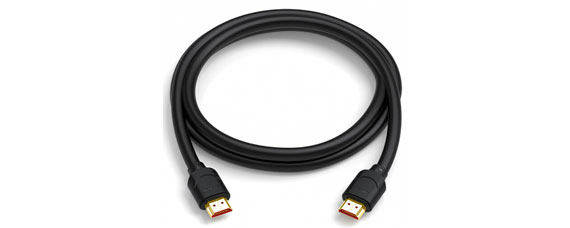Bandwidth: 2.0 is 18Gbps bandwidth, 2.1 is 48Gbps bandwidth; resolution: 2.0 supports up to 4K@60Hz, 2.1 supports 8K@60Hz and 4K@120hz; variable refresh rate: HDMI2.1 support, 2.0 does not support.

HDMI means High Definition Multimedia Interface. This standard was initiated by 7 companies including Sony, Hitachi, Panasonic, Philips, Toshiba, Siliconimage, Thomson (RCA) in April 2002, and it unifies and simplifies users. Terminal wiring replaces analog signal video and provides higher bandwidth data transmission speed and digital lossless transmission of audio and video signals.
1. Maximum broadband capacity
The maximum bandwidth capacity of HDMI 2.0 is 18Gbps, while HDMI2.1 can operate at a maximum rate of 48Gbps. Therefore, HDMI2.1 can transmit more information, and the transmitted picture has a higher resolution and a higher frame rate;
2. Resolution and frame rate
The new HDMI 2.1 standard now supports 7680×4320@60Hz and 4K@120hz. Among them, 4K includes true 4K with 4096×2160 pixels and 3840×2160 pixels. In the HDMI 2.0 specification, only 4K@60Hz is supported at the highest.
3. Play smoothness
When playing 4K video, the frame rate of HDMI2.0 is higher than that of HDMI2.1, making it play more smoothly.
4. Delay
HDMI2.1 has a variable refresh rate and fast frame transmission function, these two functions can reduce the delay and may completely eliminate the input delay.
5.HDMI 2.0 vs 2.1: Gaming
One of the biggest differences between HDMI 2.0 and HDMI 2.1 is noticeable when gaming. Only HDMI 2.1 has advanced features like VRR (variable refresh rate), which reduces screen tearing, and ALLM (auto low latency mode), which reduces lag.
HDMI 2.1 comes with VRR built-in, which allows the refresh rate of your display to match the frame rate of your game in real-time. Without this feature, your display will sometimes try to show information from two frames at once. This causes screen tearing, which is usually characterized by a horizontal break in the image.
You can also get VRR with a display that supports FreeSync or G-Sync technology. While you can use an HDMI 2.0 cable with a FreeSync display, a G-Sync display will require an HDMI 2.1 cable or a DisplayPort 1.2a cable or higher.
FAQ
How do I know if my HDMI cable is 2.0 or 2.1?
It might be challenging to distinguish HDMI 2.1 cables because many older cables compatible with earlier versions of the standard are still sold as 2.1 cables. The simplest way to tell if a cable is 2.1 or 2.1a is to search for the 2.1 or 2.1a label. Cables marked 2.0 will not work with 2.1 ports and vice versa.
Do I need to use HDMI 2.1 for 4K video?
No, not necessarily. As long as you have a High-Speed HDMI cable and a 1080p display, you can enjoy 4K video quality. HDMI 2.1 or Ultra High-Speed HDMI cables could be beneficial for reducing interference and use with future HDMI 2.1 devices. Whichever HDMI version you're working with, ensure that you choose the suitable HDMI cable types for your devices.
How do I change HDMI 2.1 to HDMI 2.0?
While you can't change HDMI versions on your devices with firmware upgrades, you don't have to do anything special to use HDMI 2.1 cables with products that use HDMI 2.0b and older. However, you should use HDMI 2.1 cables with HDMI 2.1 devices for the best performance.
copyright © 2025 Huizhou Hyde times Technology Co., Ltd | copyright
Hello, please leave your name and email here before chat online so that we won't miss your message and contact you smoothly.